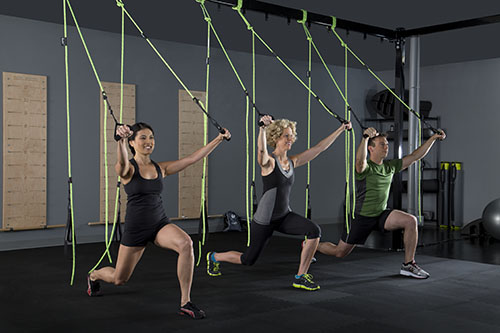Keep Your Form through Function
In recent years, the words Functional Training have been bandied around with many trainers claiming to be teaching this new found method of keeping in shape. But do people really understand what this is all about? It’s time to shed a bit of light on this somewhat mysterious subject.
Functional training has its origins in rehabilitation. Physical, Occupational therapists and Chiropractors often use this approach to retrain patients with movement disorders. Interventions are designed to incorporate task and context specific practice in areas meaningful to each patient, with an overall goal of functional independence. For example, exercises that mimic what patients did at home or work may be included in treatment in order to help them return to their lives or jobs after an injury or surgery. Thus if a patient’s job required repeatedly heavy lifting, rehabilitation would be targeted towards heavy lifting, if the patient were a parent of young children, it would be targeted towards moderate lifting and endurance, and if the patient were a marathon runner, training would be targeted towards re-building endurance. However, treatments are designed after careful consideration of the patient’s condition, what he or she would like to achieve, and ensuring goals of treatment are realistic and achievable.
Functional training attempts to adapt or develop exercises which allow individuals to perform the activities of daily life more easily and without injuries.
In the context of body building, functional training involves mainly weight bearing activities targeted at core muscles of the abdomen and lower back. Most fitness facilities have a variety of weight training machines which target and isolate specific muscles. As a result, the movements do not necessarily bear any relationship to the movements people make in their regular activities or sports. That is, a strength machine such as a chest press will work one muscle group, but the fact that the user is fixed in one spot, body movement is fixed and many muscle groups do not get attention during the exercise.
In rehabilitation, training does not necessarily have to involve weight bearing activities, but can target any task or a combination of tasks that a patient is having difficulty with. Balance training, for example, is often incorporated into a patient’s treatment plan if it has been impaired after injury or disease.
Cable machines, also known as pulley machines, are large upright machines, either with a single pulley, or else a pulley attached to both sides, commonly known as dual adjustable pulley machines. They allow an athlete to recruit all major muscle groups while moving in multiple planes. Cable machines also provide a smooth, continuous action which reduces the need for momentum to start repetitions, provide a constant tension on the muscle, peak-contraction is possible at the top of each rep, a safe means of performing negative repetitions, and a variety of attachments that allow great flexibility in the exercises performed and body parts targeted.
Cable Pulley machines have been gaining popularity over the past few years and SEARA stock world class brands backed by first class warranty and after-sales service. Call in find out more about Functional Training and how it can help you find your form.











